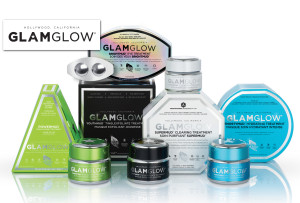Strokes are reported as the 4th leading cause of death in the United States resulting in someone dying due to this sudden life taker every four minutes. Strokes are not limited to the older generation, young people are being struck by this often times deadly episode more and more.

Model Katie May
photo / Instagram
Recently, Katie May, a popular lingerie and fitness model who was only 34 years died from a major stroke to due to a blocked carotid artery. You can read her full story on http://www.people.com/article/katie-may-model-stroke-critical-condition.
With so many people suffering from strokes each day and the population at a higher risk, including the younger generation, understanding the signs of a stroke, how to prevent a stroke and the best ways to fight against this silent killer is an important part of making sure you and your loved ones are protected and well informed when it comes to taking care of your health.
Causes
The first thing to know is that traditionally there are three main types of stroke:
- Ischemic – By far the most common of the three, Ischemic strokes account for 85% of the reported cases in the United States. The cause of an Ischemic stroke are the impact of blood vessels that support the brain becoming blocked or narrowed, causing severe lack of blood flow and circulation. Other common causes of Ischemic strokes are contributed to blood clots being transported through the body until it reaches a smaller blood vessel causing blockage or blood flow reduction.
- Hemorrhagic – A more severe form of stroke, these episodes are caused by the arteries in the brain leaking blood or even bursting open. This excess blood now passes through the brain cavity to fill up the space between the brain and the skull causing pressure and damage. Most of the cases of Hemorrhagic strokes are attributed to hypertension and aneurysms.
- Transient Ischemic (TIA’s) – Or more commonly known as “mini-strokes” these strokes are typically short lived and only disrupt the brain in small amounts of time. Reducing the risk of extended brain damage. Still a medical emergency, if someone you know is showing signs of a stroke, then call for help immediately. Even though they may be having a mini-stroke at that moment, it could trigger a larger and more serious episode.
Signs
The signs of a stroke are not always black and white, and most people can mistake the signs as normal day to day symptoms of another issue all together. But knowing that these signs accompany the potential happening of a stroke is key to getting the help and medical attention you need in a timely manner, reducing your long term impact of a stroke episode.
- Confusion – many people suffering from a stroke report having trouble focusing, unable to speak in cohesive sentences, or even having a hard time physically speaking the words.
- Headache – due to the causes of a stroke and its relation to blood flow to the brain, it is common place for people suffering from a stroke to complain about a headache, migraines, altered consciousness, or even vomiting.
- Numbness – because the body is having a restriction in the blood flow, many patients report numbness in body parts during a stroke. Particularly numbness on one side of the body is common due to the interruption of blood flow. Other parts can include the face, arms, legs and other areas indicating a potential stroke episode.
- Body Control – similar to the numbness factor, stroke victims can have a hard time controlling their bodies. They may report being dizzy, having vertigo, or show a lack of coordination in their regular daily activities.
Prevention
As with any major medical condition, the best way to prevent potential risk is to address any underlying health risks that can contribute to a stroke.
Combined with living a responsible and healthy lifestyle, this also gives your body the right support it needs to function properly. With that being said, living a healthy lifestyle is subjective to many people, so here are a few things to steer clear of when trying to prevent a stroke.
- Avoid High Cholesterol Diets – enjoying a well balanced meal not only benefits your overall health, but it also allows your body to reduce the natural creation of cholesterol. Cholesterol is commonly known to build up and cause blockages in your arteries, resulting in strokes and heart attacks.
- Maintain Your Weight – another factor of preventing a stroke is to maintain a healthy weight. By eating right, exercising, and staying active, one can enjoy a healthy weight while still enjoying life.

- Exercise – combined with a healthy diet, exercising is one of the biggest challenges most of us face. Unfortunately, it is also one of the best and most effective ways to prevent long term health problems.
- Monitor and Maintain your Blood Pressure – knowing how your body is working is key to preventing a stroke, and by having regular checkups with your doctor can help you take preventative actions well before you start showing signs of risk.
- Avoid Smoking – smoking causes all kinds of health problems, and if cancer didn’t give you enough reason to put down your smokes, then add potential stroke to the list.
- Moderate Alcohol Consumption – similar to smoking, excessive alcohol has been known to cause an array of health problems, including liver cancer, liver failure, and yes, even stroke. Take your party favor with a bit of discretion, as it could possibly save your life.
While this list is not the final verdict to when it comes to preventing a stroke, it does have a common sense factor to it. Most of these prevention suggestions are common to your every day livelihood and well being, so making a small change to your diet, exercise program or medical progress should be an easy way to help protect you and your family from a stroke.
Acting F.A.S.T.
One of the easiest ways to remember all this information and help yourself or a loved one from extensive damage during a stroke is using the F.A.S.T. acronym. This easy to remember and relative guide can be the difference between life and death in some stroke cases. So what does F.A.S.T. stand for?
- F – Can they smile, or is one side of their face drooping?
- A – Are they able to raise and maintain their arms above their head?
- S – Do they have trouble speaking, often times slurring their words?
- T – Take action! If a loved one is showing any of these signs, call your local medical team right away.
Strokes are extremely common in today’s society, with the ongoing levels of stress, countless hours at the office, lack of proper physical exercise and healthy diets, more and more people are at risk and suffer from this disease. Knowing how to identify, prevent and take action when signs of a stroke are present can be the difference between life or death. So next time you are worried about the risk of a stroke, remember the F.A.S.T. response guide and help save a life.








Leave a Reply